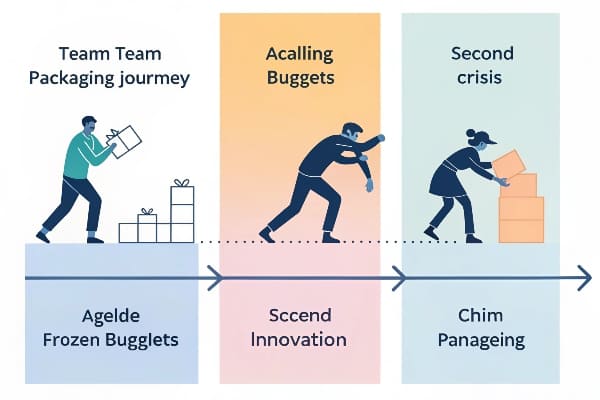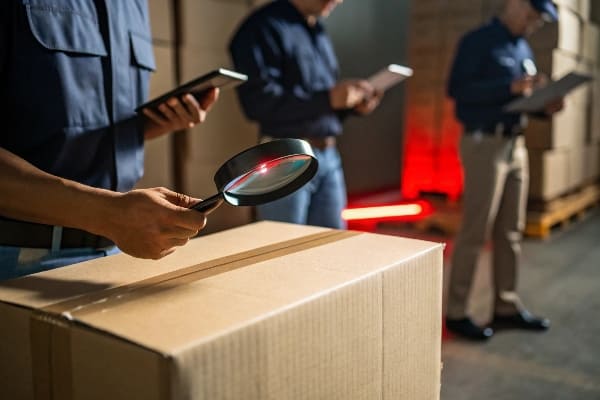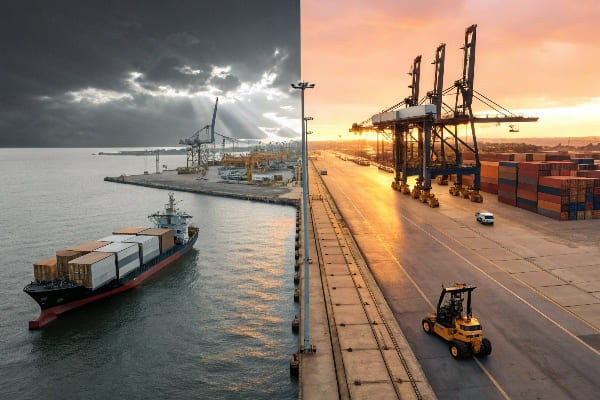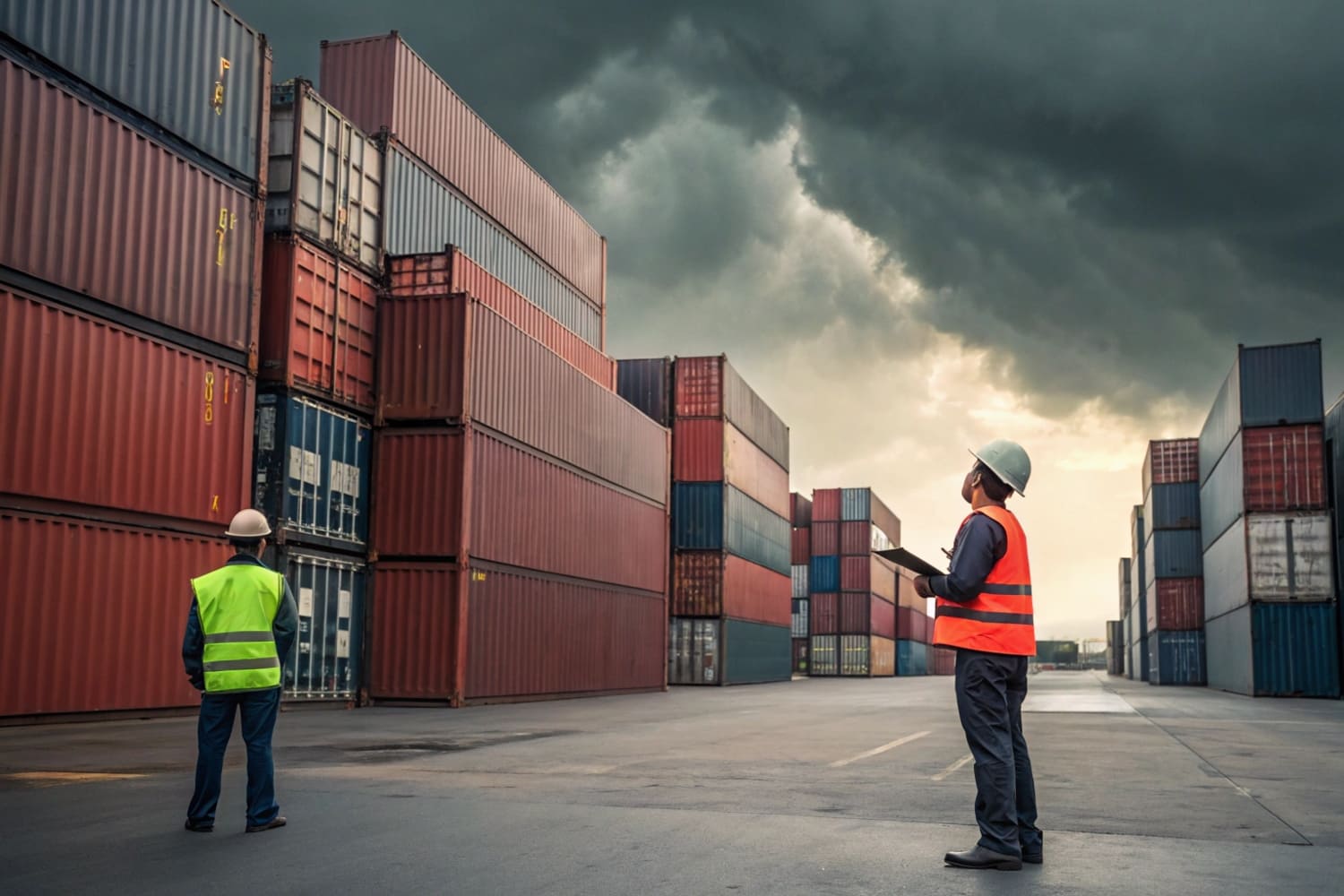I have watched tariffs move like sudden storms over supply chains. Many firms freeze budgets, then scramble for new partners. Uncertainty is now the first raw material in every purchase order.
Tariffs raise landed costs, push companies to redesign supply routes, and shift packaging from a quiet cost center into a strategic lever. Lower‑margin firms feel the strain first, while agile players win with faster design and closer supplier ties.

The world rarely pauses for us to finish a plan. Stick with me and I will show clear steps to read tariff waves instead of drowning in them.
How will tariffs affect the manufacturing industry?
Factory owners hear the first thunder. Raw steel, resin, and paper price lists jump before news sites finish their headlines. Panic meetings follow. I felt that jolt in my own plant more than once.
Tariffs lift input costs, compress margins, and force manufacturers to automate, relocate, or renegotiate—survival depends on speed of response, not size of company.

Chain Reactions Inside the Shop Floor
When a 10 % duty lands on paperboard1, my planning team rewrites the bill of materials overnight. Revised specs ripple through design files, tooling, and supplier contracts. Energy prices often rise next as governments retaliate; that slams our ovens and dryers. Cash flow narrows because buyers delay purchase orders, hoping the trade war cools. I automate cutting lines to save labor, but that means weeks of downtime and new training. Mid‑tier firms lacking reserves cannot absorb both capital spend and tariff costs, so they close shifts or outsource abroad, even to former competitors.
Decision Matrix for Plant Owners
| Trigger | Immediate Action | Long‑Term Play |
|---|---|---|
| Raw material duty | Re‑source within bloc | Vertical integrate pulp or resin |
| Machinery duty | Lease equipment | Lobby for exemptions |
| Export retaliation | Diversify market mix | Build overseas final assembly |
Smart managers trim SKUs, lock in forward contracts, and revise product mix toward higher value items. Those moves keep quality stable while margin per ton recovers.
How will tariffs affect the packaging industry?
Retail brands rarely questioned box cost lines. That changed the moment customs invoices doubled. My cardboard display business became a frontline adviser, not a commodity vendor.
Tariffs nudge brands to source packaging closer to factories, favor lighter materials, and demand designs that ship flat—cost visibility beats aesthetics when duties bite.

Why Packaging Moves to Center Stage
Tariff math compounds: import duties on the product, then again on outer cartons, plus higher freight because thicker packaging steals container space. I redesigned crossbow display stands for a U.S. buyer so they fold into half the volume, cutting both duty and freight. The change saved him more than my entire invoice. Certainty of compliance matters too. Clients ask for origin certificates2 on every layer, down to glue. My plant in Guangzhou adds QR codes inside flutes so customs can trace batch dates within minutes.
Packaging Levers Under Tariff Pressure
| Lever | Cost Impact | Speed to Implement |
|---|---|---|
| Switch to local board | Medium | 1‑2 weeks |
| Flat‑pack engineering | High | 4‑6 weeks |
| Dual‑source printing | Low | 2 weeks |
| Digital proofs to skip samples | Medium | Immediate |
Teams that master these levers keep launch dates on track and even use the story—“tariff‑smart packaging3”—as a brand value in North America.
How do tariffs affect packaging?
Confusion often starts with wording. Clients ask me if the box itself is taxed twice. The truth is simple yet hidden in codes.
Tariffs apply to packaging materials based on their Harmonized System codes; classification errors can trigger back‑dated penalties larger than the shipment value.

Mapping Codes to Real Boxes
A display stand printed with crossbow art sits in HS 4823. Tariff for that line into the U.S. was 7.5 % after 2020, then dropped for some countries but not for China. If the same stand ships with product inside, customs may classify it as part of the crossbow kit4, facing the weapon duty instead—often higher. I attach removable inserts so the box ships empty, then gets loaded in the destination warehouse. That legal fiction cuts duty without bending rules.
| Scenario | HS Code | Duty Rate (US) | Mitigation |
|---|---|---|---|
| Empty printed display | 4823.90 | 7.5 % | Negotiate FTA route |
| Display packed with goods | 9507.90 (sports arms) | 12 % | Ship flat, load later |
| Corrugated shipper | 4819.10 | 0‑5 % | Source from FTA partner |
Customs also audits declared value. If printing plates or design fees hide off‑invoice, fines follow. I bundle design within unit cost to stay transparent. That habit saved me during a 2024 CBP check in Long Beach.
How do tariffs affect the shipping industry?
Ports feel tariffs like sudden tide shifts. Containers pile when traders rush before new duties. Then berths sit idle as traffic collapses. I saw both extremes in one quarter.
Tariffs create demand spikes, equipment imbalances, and higher surcharges; carriers hedge risk by raising bunker adjustment factors and shortening contract validity.

From Factory Gate to Port Gate
When U.S. Section 301 lists expanded, my American clients front‑loaded orders. Freight rates from Shenzhen to LA5 tripled in three weeks. Carriers added “risk premiums” that were not discountable. After the rush, rates plunged, but empty boxes were stranded inland, so I paid reposition fees. New routing through Mexico grew popular because Maquiladora rules lowered duties on final assembly. That pulled container supply south, hurting direct China‑US space.
Carrier and Shipper Response Table
| Challenge | Carrier Move | Shipper Counter |
|---|---|---|
| Rate volatility | Shorter contracts | Use forward freight agreements6 |
| Port congestion | Omit calls | Shift to smaller ports |
| Empty return cost | Surcharges | Cross‑dock to new demand regions |
I now book space eight weeks ahead and split volumes across three forwarders. That timing protects my cardboard displays for Barnett Outdoors launches each fall.
Conclusion
Tariffs are no longer background noise; they write the cost sheet. Decode the rules, redesign fast, and your packages will still reach shelves on time.
Explore this link to understand how tariffs affect the paperboard industry and the broader implications for businesses. ↩
Understanding the significance of origin certificates can help businesses ensure compliance and streamline their shipping processes. ↩
Exploring this link will provide insights into how businesses can leverage tariff-smart packaging to enhance brand value and reduce costs. ↩
Understanding the components of a crossbow kit can help you navigate customs regulations and duties effectively. ↩
Understanding current freight rates can help you make informed shipping decisions and budget effectively. ↩
Exploring forward freight agreements can provide insights into managing shipping costs and mitigating risks. ↩

